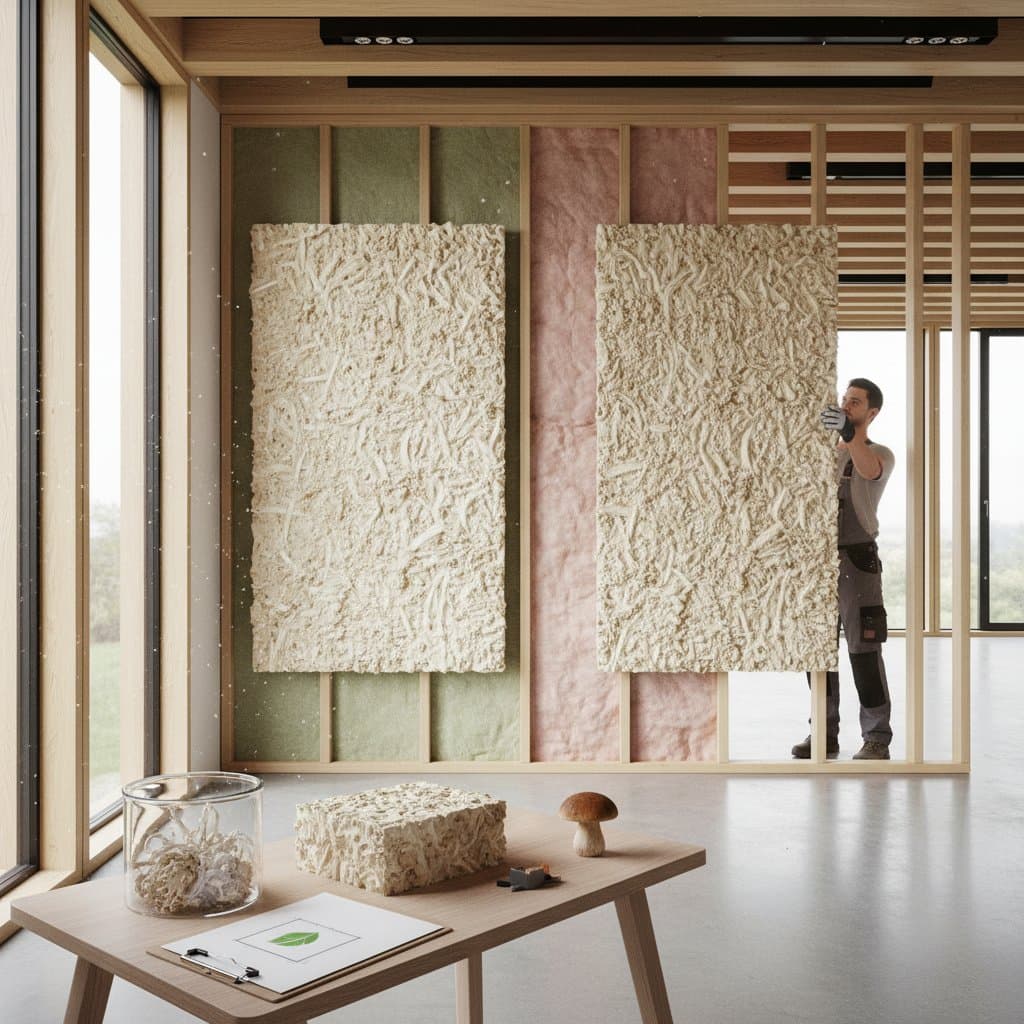Mushroom Insulation: The 2025 Green Building Breakthrough
Why Mycelium Insulation Is Changing Home Efficiency
As energy costs continue to climb, homeowners are searching for innovative ways to reduce utility bills while embracing sustainable living. Mushroom insulation, derived from mycelium, the root structure of fungi, stands out as a revolutionary material in 2025. This biodegradable alternative to fiberglass and foam not only matches traditional insulation in thermal performance but also offers unique benefits like fire resistance and improved indoor air quality. For those looking to cut costs and environmental impact, this emerging solution deserves serious consideration.
Financial and Practical Advantages of Mycelium
Insulation plays a critical role in maintaining a home's energy efficiency, directly influencing heating and cooling expenses. Poorly insulated homes can lose up to 40 percent of conditioned air through walls, roofs, and floors, driving up bills and straining HVAC systems. Mycelium insulation addresses these challenges with a range of practical and financial benefits that make it a standout choice.
- Superior Thermal Performance: Its R-value, a measure of heat resistance, competes with conventional materials, ensuring effective temperature control year-round.
- Long-Lasting Durability: When treated and installed correctly, it resists mold, pests, and degradation, minimizing the need for costly repairs or replacements.
- Environmental Responsibility: Unlike synthetic options, mycelium breaks down naturally at the end of its life cycle, leaving no harmful waste behind.
- Enhanced Safety: Its natural fire-resistant properties mean it chars rather than burns, providing an added layer of protection without toxic chemical treatments.
From a budgeting perspective, initial costs for mycelium insulation may range from comparable to slightly higher than fiberglass, depending on regional availability. However, the reduction in energy expenses and maintenance needs often offsets this upfront investment over time, delivering measurable savings.
Breaking Down Costs and Returns
Understanding the financial implications of any home improvement is essential for making informed decisions. Mycelium insulation typically carries an upfront cost that is 10 to 20 percent higher than standard fiberglass, though it remains more affordable than spray foam, which can be 30 to 50 percent pricier. The true value lies in the long-term returns, driven by several key factors.
- Energy Cost Reductions: Homes with effective insulation can see annual savings of 15 to 25 percent on heating and cooling, a significant relief for household budgets.
- Extended Lifespan: With proper protection from moisture, mycelium insulation can endure for decades, matching the longevity of the building itself and avoiding frequent replacement costs.
- Healthier Living Spaces: Free from synthetic chemicals and volatile organic compounds, it supports cleaner indoor air, potentially lowering health-related expenses tied to respiratory issues.
When these elements are factored together, many homeowners find the payback period falls between 5 and 7 years. This timeline positions mycelium as a wise choice for both personal residences and investment properties, balancing cost with enduring benefits.
Building Resilience for the Future
Beyond energy efficiency, the durability of insulation materials often determines their overall value. Mycelium stands out for its ability to withstand common threats like pests, which frequently damage other organic options such as cellulose. Its inherent fire resistance further enhances home safety, while its dense composition provides a bonus of sound dampening, reducing noise from external sources or between rooms. These combined qualities ensure that investing in mycelium insulation contributes to a more comfortable, secure, and lasting living environment.
Steps to Adopt Mycelium Insulation
For homeowners intrigued by the potential of mycelium insulation, whether for a new construction project or a retrofit, taking actionable steps can turn interest into reality. Start by clarifying your primary goals, whether they center on slashing energy bills, improving air quality, or committing to sustainable building practices. Next, investigate local suppliers, as availability may vary by region, and connect with distributors who specialize in eco-friendly materials. Consulting with a builder or energy auditor experienced in alternative insulation can provide tailored advice on installation and performance expectations. Be sure to gather multiple quotes, comparing mycelium against traditional options like fiberglass or spray foam for both price and effectiveness. Finally, explore financing options such as green building incentives or rebates that can ease the initial cost burden, making the transition smoother and more affordable.
Addressing Common Concerns
Is mycelium insulation suitable for those with mold allergies?
Absolutely. The material is thoroughly dried and rendered inert during production, ensuring it does not release spores or trigger allergic reactions.
What happens if it gets wet?
Prolonged exposure to water can compromise its performance, much like other insulation types. Using proper vapor barriers and installation techniques prevents moisture issues.
How does it stack up against spray foam for air sealing?
While spray foam excels in creating airtight seals, mycelium can achieve comparable results when paired with additional air barriers during installation.
Is DIY installation an option?
Although panels are relatively easy to handle and cut, professional installation is advised to guarantee proper sealing and adherence to local building codes.
Does its organic nature attract pests?
Not at all. The drying and treatment process makes it unappealing to insects and rodents, ensuring it remains pest-free.
Moving Toward a Sustainable Home
Embracing mycelium insulation represents more than just a home improvement decision; it reflects a commitment to efficiency, safety, and environmental stewardship. By taking the time to evaluate your needs, connect with knowledgeable professionals, and weigh the long-term advantages, you can transform your living space into a model of modern sustainability. The path to lower energy bills and a healthier home begins with informed choices, and mycelium insulation offers a compelling step forward for 2025 and beyond.







